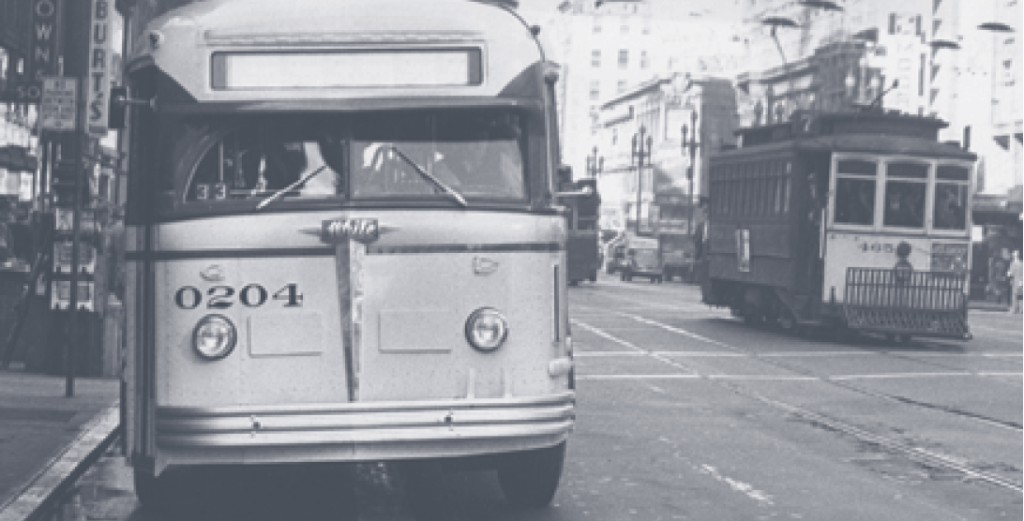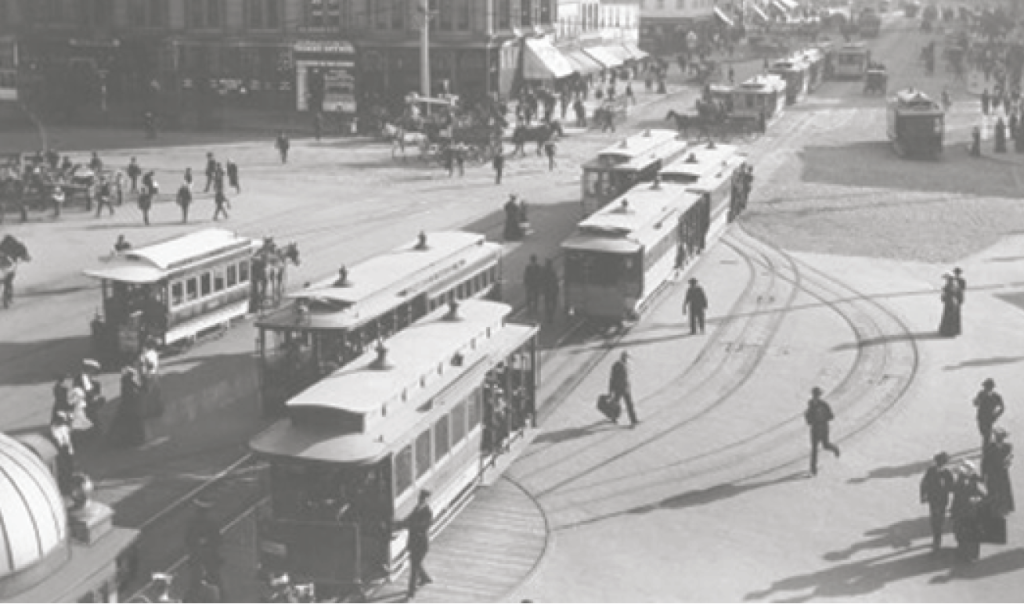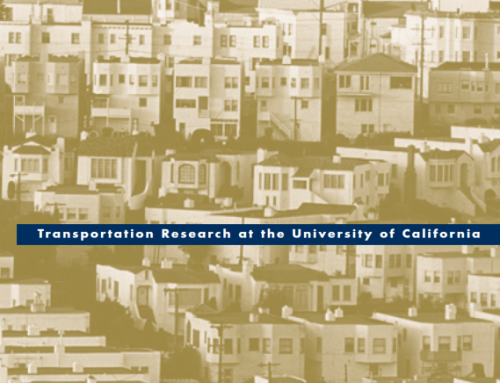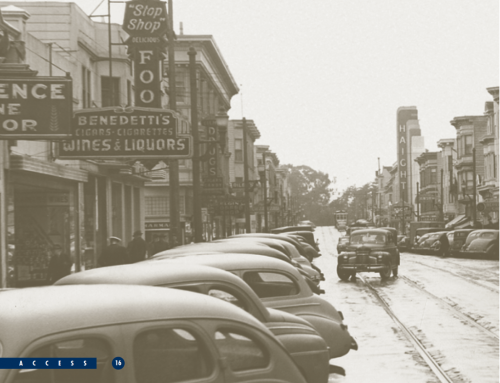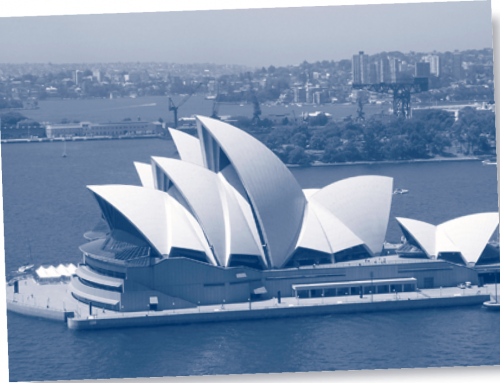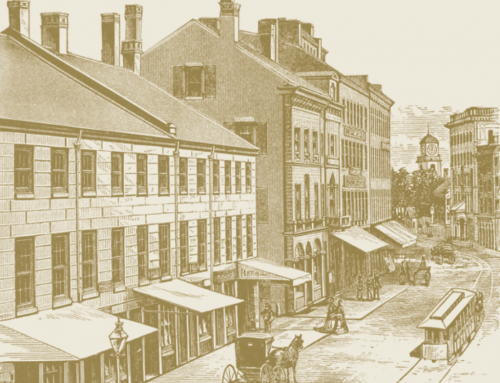There is growing international consensus that the world needs a successor to the motor car. A deluge of commentary in recent times has alerted us all to the hazards of air pollution, traffic congestion, petroleum consumption, and now global warming. The automobile is said to be the cause of it all. Some argue that decentralization of cities and low suburban densities force people to use cars. Transportation and urban planners everywhere have been looking for remedies, preferably by finding an alternative to the car such as the bus or train.
The problem is that those densities—of residential areas, but also of employment zones—are generally too low to sustain either form of transit. There is some disagreement about precise numbers, but viable bus transit is alleged to be possible at a minimum density of ten to twenty dwelling units per acre. The lower densities seem to be enough for successful bus transit in Adelaide and Brisbane, Australia. In any case, numerous studies show that perfectly adequate family housing with private yard space can be provided at the higher density. Much of San Francisco, including highly desirable (and expensive) areas like Pacific Heights, is built at twenty units per acre. Note that this is still less than the minimum density necessary to support light rail, which is around 27 units per acre.
In addition to this, however, bus transit must combat a serious image problem. Margaret Thatcher famously said in 1986 that “A man who, beyond the age of 26, finds himself on a bus can count himself as a failure.” That idea seems to be supported by the research of Garrett and Taylor, reported in the Berkeley Planning Journal in 1999. Buses, they found, were used only by downtown commuters and what they called “transit dependents”: people who were too young, too old, or too poor to drive, who lived in inner cities, had low incomes, and lacked car access. The suburbs, providing fifty percent of workers in metropolitan areas, generated less than thirty percent of transit users. They concluded that current policies to increase the number of suburban riders are ineffective and inefficient.
Bus-based cities can and do work. Their bus systems deliver good service, with high volumes, at low cost.
But need they be? Experience from elsewhere in the world suggests otherwise. Even in the United States, there are some limited successes, chronicled by Robert Cervero and Michael Bernick in their book, Transit Villages in the 21st Century, where Rosslyn and Ballston in the Virginia suburbs of Washington, DC emerge as stars. These planned suburbs have higher-than-usual densities built around transit access, including heavy rail. But Rosslyn and Ballston are exceptional.
We seem to be left with an uncomfortable paradox. People like living in suburbs. And, increasingly, businesses like locating there. But most suburbs are designed for cars. Investment in rail-based transit tends to arrive long after patterns of auto dependence have become engrained. Bus-based systems could be viable, but are perceived as unsexy and down-market.
There are three ways to solve this seeming paradox, and they are complementary. First, try to identify what might change travel behavior by studying demand for transit. Second, and most important, find out how they do it successfully elsewhere, especially in places that look like American places, such as Great Britain and Australia. And third, consider how to use technology to resolve the problem—the traditional American way.
Influencing Behavior
There is a plethora of recent work on demand for bus transit, much from Great Britain, some from the United States, from which a few basic conclusions can be extracted. Transit users, unsurprisingly, will take fewer trips when fares go up. Also, they will take more trips when service is improved, for example if buses arrive more frequently or drive longer routes. And, supporting the negative image of buses, as a person’s income goes up, the number of bus trips he takes goes down.
So to make a bus system viable, fares must be kept down and services must be as good as they can be. If the service is excellent and transfers seamless and easy, then the bus will appear to be a superior form of transit, which will counteract the problem of image. Some Latin American cities and other places like London and Toronto are showing how this can be done.
Looking Elsewhere: Model Bus Cities
 Singapore and Curitiba, Brazil are two cities widely noted globally for their well-conceived and carefully crafted planning of integrated transport and land use. Superficially, they have many features in common. But the technological basis is very different. Singapore depends on a conventional heavy rail metro system to support high urban densities around mixed-use urban cores at train stations, which also serve as interchanges with bus and light rail feeders. Curitiba achieves much the same effect with buses: high-density, mixed-use corridors are aligned along boulevards carrying express buses which travel on completely segregated busways and connect at selected stations with orbital services and local conventional bus lines.
Singapore and Curitiba, Brazil are two cities widely noted globally for their well-conceived and carefully crafted planning of integrated transport and land use. Superficially, they have many features in common. But the technological basis is very different. Singapore depends on a conventional heavy rail metro system to support high urban densities around mixed-use urban cores at train stations, which also serve as interchanges with bus and light rail feeders. Curitiba achieves much the same effect with buses: high-density, mixed-use corridors are aligned along boulevards carrying express buses which travel on completely segregated busways and connect at selected stations with orbital services and local conventional bus lines.
When it began to plan the system, in the mid-1970s, Curitiba could not afford a metro system like those then being built in São Paulo and Rio de Janeiro. Its planners therefore settled for what they thought was a second-best solution. But the bus system has proved so successful, not least in its capacity for rapid expansion to serve the entire city, that it has come to seem a first-best solution—so much so that bus rapid transit (BRT) has begun to be widely implemented: in Bogotá, Quito, and elsewhere.
BRT systems appear to have been a major success story, for good reasons. First, they can achieve carrying capacities equal at least to light rail: 4,000 passengers per hour on segregated bus lanes using special shelters for rapid boarding and deboarding, against only 1,800 an hour on a conventional bus on conventional streets. Second, they achieve very high numbers of bus trips per capita: 1.02 per day in Curitiba, higher than any other major city. Third, they do so at a cost (in terms of dollars per mile) very much lower than either highways or rail rapid transit.
London has achieved a remarkable renaissance in bus travel without creating BRT— at least so far, though BRT networks are being planned in East London. London’s bus riders number 5.4 million per day, up nineteen percent since 2000. How has this been achieved? When Margaret Thatcher deregulated the bus systems of British cities in the 1980s, even she did not dare extend the experiment to London. Instead—as, interestingly, in Curitiba—a franchise was created for private companies to operate routes for the public authority, Transport for London. New technologies such as the Oyster Card—a prepaid plastic card that charges fares via a card reader on the bus—have cut boarding times and hence overall transit times; in Central London, it is no longer possible to pay cash to board the bus. Currently, 983 dedicated bus lanes, extending over 155 miles, with priority at key junctions, speed journeys and make bus travel more reliable, especially at peak hours. Fares have been kept low, and in some cases reduced, especially for longer journeys.
Land Use and Transit Use
However, in asking whether such successes could ever be replicated in American cities, we need to consider the critical question of land use—especially residential densities. In London, buses achieve their most intensive use in the inner and inner-middle rings plus an area around Heathrow airport that has some inner-area characteristics; in the least dense outer suburbs that most closely approximate American suburbs, the car tends to dominate. And as discussed earlier, the minimum density needed to support adequate bus service may be in the range of ten to twenty dwellings per acre, well above the four per acre that characterize suburban development in much of the United States. (Even model examples of “New Urbanism” prove in practice to be built at around seven units per acre, far short of viability for bus transit.) Something can be achieved here with higher densities around bus stops and interchange stations. But there needs to be somewhat uniform moderate density if buses are to be viable; otherwise, car dependence will establish itself and may then be extremely difficult to modify, as some cities are finding. In any event, what this means is that it will be best for American planners to study those cities that most resemble American ones in their suburbanization patterns. Here, the work of Paul Mees is particularly pertinent. Mees systematically compared two cities that had developed in the Anglo-Saxon suburban tradition: Melbourne, Australia and Toronto, Canada. He found that although car ownership is higher in Toronto, Toronto citizens make more than twice as many trips by public transport. For trips to work beyond walking distance, one-third in Toronto are by public transport; in Melbourne, less than one in five. Similar differences are reported for other types of trips. Mees then compared possible explanations, including one that is most often offered: that Toronto’s transit success arose from its land use planning, specifically the higher proportions of high-density, high-rise apartment development around stations and interchanges. But he found that statistical evidence failed to confirm this. The key factor proved to be simply quality of service. Toronto operates its transit twenty hours a day, seven days a week, attempting to guarantee seamless interchange between lines and different transit modes. Transit in Toronto is widely perceived as offering a real alternative to driving the car, in a way that is simply not true for Melbourne.
What can we conclude from the international evidence? First, bus-based cities can and do work. Their bus systems deliver good service, with high volumes, at low cost. There remains a question: can they do so everywhere—especially in the low-density suburban periphery? Can they cope with journey patterns that are less radial than orbital, with many origins and destinations, characteristic of the new polycentric city region? (One or two places, like Houston, Texas and Edmonton, Canada, have developed multiple hub-and-spoke bus routes specifically to handle such patterns, and with some success). Can American densities support viable bus service? The answer seems to be that if cities as varied as Adelaide, Brisbane, and Toronto can in their different ways achieve it, then so can American cities. Polycentric mega-city regions with a series of strong urban cores, which seem to be an emerging urban form all over the world from America to China, may provide the concentrations to support a good transit system.
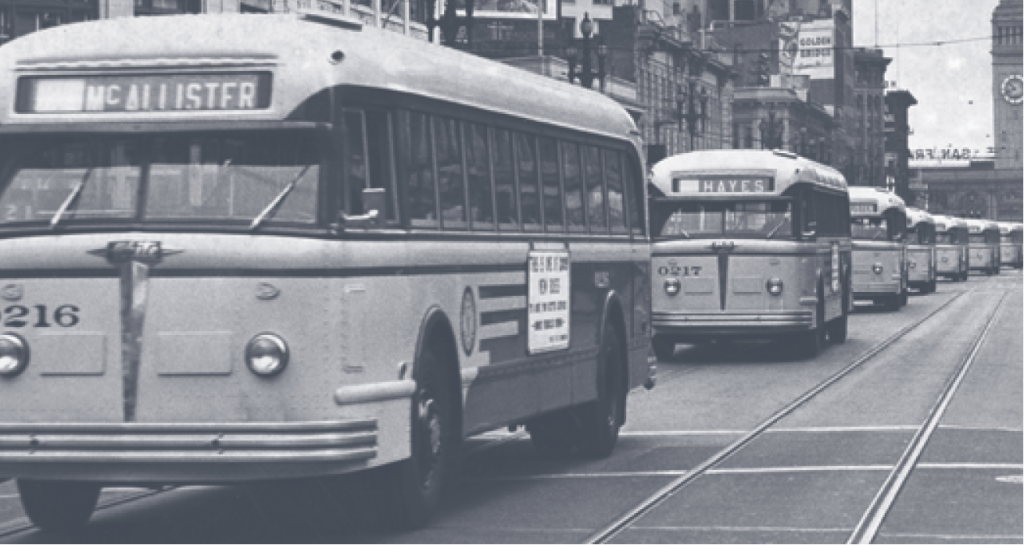
Technology to the Rescue
The American answer to any problem has always been that technology will fix it. Ingenuity, harnessed to commercial application, will find a superior alternative. Just as the Model T replaced the horse and buggy, so we will find a replacement for the automobile—which, we should remember, has been around in roughly its present form since 1885. And there is incentive enough, given the evidence of depleting global energy supplies and the challenge of global warming.
There are two main lines of attack. First, to find a new energy source to replace the internal combustion engine: in the short term, though hybrid technology; in the medium or longer term, either fuel cells or the all-electric car, a serious contender in the early days of the automobile which may be due for a revival. Second, to inject more information tech- nology into vehicles—something that has been happening progressively since the arrival of the microprocessor in the early 1970s—and into the highway.
These two lines of advance would eventually converge in the form of a new technology: the automated Personal Rapid Transit (PRT) system, which one could regard as a bus-taxi hybrid. There are a number of European competitors, such as ULTRA (Urban Light Transport), which is about to be introduced at London’s Heathrow Airport to link peripheral parking lots with central terminals. Passengers will enter cars and book their destinations via smart cards, and the car will proceed autonomously along a guideway. The average journey at Heathrow will be one mile, covered in three minutes.
Within a controlled environment, such as an airport, downtown, shopping mall, or leisure complex, such PRT systems can be both effective and economic. They could also be applied in new residential areas, where they could connect homes with park-and-ride garages and longer-distance transit systems, both rail and bus. It is easy to envision them serving suburban developments around bus stations such as those in Brisbane and Adelaide.
If or when such a system comes into being, its implications for urban development could be complex and possibly paradoxical. It might well encourage long-distance commuting, since it would raise average highway speeds and lower average journey times proportionately. It could encourage a pattern of widespread regional dispersal with local concentrations served by PRT. In Europe, where good quality rail transit is widely avail- able, rapid development of the high-speed train system—running at speeds from 125 to 220 miles per hour—is already beginning to produce similar effects, which could well multiply as the system spreads to connect all major cities within the next decade.
The Way Forward
The conclusion, surely, is that we should continue to work energetically to generate a successor to the automobile which would offer all the comfort and convenience of the current vehicle but without its malign consequences for congestion, pollution, and global warming. The prospects for a breakthrough in energy sources are promising, as the success of the Toyota Prius already demonstrates. The prospects for full automation are less certain. Meanwhile, we should seek to work with what we’ve got and what we know— including, most importantly, what other people know. Bus transit Latin American style or Australian style, including demand-responsive modes, is one realistic possibility. High-quality European style high-speed rail transit, used for longer-distance suburban commutes within widely spread polycentric mega-city regions, is another. We need to learn from best practice wherever it’s to be found. That way lie the best prospects for civilized urban movement as part of civilized urban living.
Further Readings
Intergovernmental Panel on Climate Change (IPCC). Climate Change 2001: The Scientific Basis (Cambridge, United Kingdom: Cambridge University Press, 2001).
Daniel Sperling and James Cannon, eds. Driving Climate Change: Cutting Carbon from Transportation (Elsevier, 2006).
Transportation Research Board. Integrating Sustainability into the Transportation Planning Process (Washington, DC: The National Academies, 2005).
United Nations Framework Convention on Climate Change (UNFCCC).

